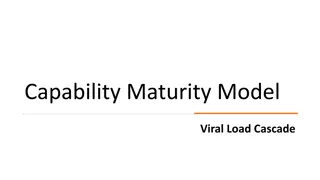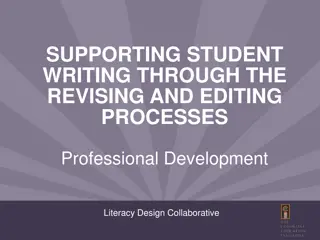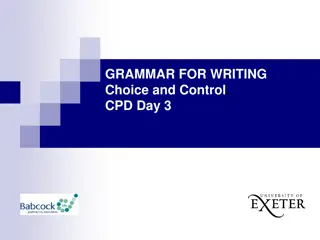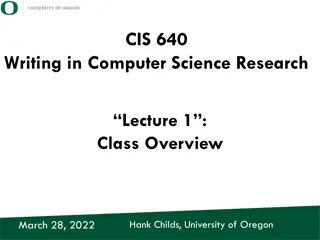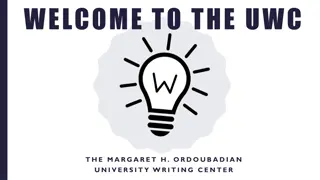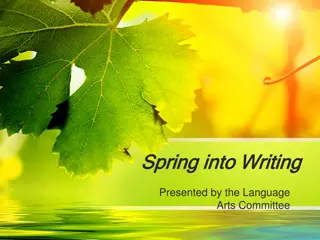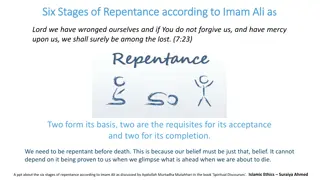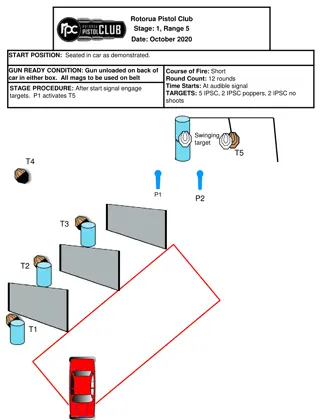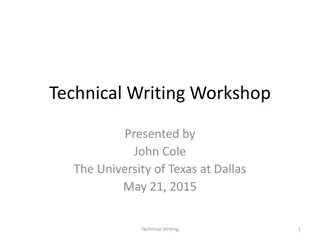The Writing Process Stages & Common Features
Explaining the stages of academic writing from analyzing to proofreading, along with common reasons for writing, types of academic writing, and text components. Also covers written assignment formats, writing in paragraphs, dealing with new vocabulary, and more.
Download Presentation

Please find below an Image/Link to download the presentation.
The content on the website is provided AS IS for your information and personal use only. It may not be sold, licensed, or shared on other websites without obtaining consent from the author.If you encounter any issues during the download, it is possible that the publisher has removed the file from their server.
You are allowed to download the files provided on this website for personal or commercial use, subject to the condition that they are used lawfully. All files are the property of their respective owners.
The content on the website is provided AS IS for your information and personal use only. It may not be sold, licensed, or shared on other websites without obtaining consent from the author.
E N D
Presentation Transcript
The Writing Process The Writing Process Explaining all the stages of producing a piece of academic writing, from analysing the title, reading the sources, note-making and referencing, through to rewriting and proofreading the final draft. 2
1.1 1.1 Why do we write? What is the purpose of academic writing? Writing Writing Basics Basics (p.3) (p.3) Can you think of four reasons? 3
Common reasons for writing (p.3) Common reasons for writing (p.3) To report research done by the writer To answer a question the writer was given To give the writer s views on a topic To synthesise research done by others 4
Common types of academic writing (p.5) Common types of academic writing (p.5) What are the differences between these types of academic writing? Essay Dissertation/ Thesis Project Article Notes Report 5
The format of written assignments (p.5) The format of written assignments (p.5) Longer essays and reports usually include: Introduction Main body Literature review Case study Discussion Conclusion References Appendices 6
Common text features (p.7) Common text features (p.7) Discuss the function of these text components: Titles and sub-titles Citation Abbreviation Italics Brackets Inverted commas Footnotes and endnotes 7
Writing in paragraphs (p.9) Writing in paragraphs (p.9) Discuss these questions with another student: What is a paragraph? Why are texts divided into paragraphs? How long are paragraphs? Do paragraphs have a standard structure? 8
Dealing with new vocabulary (p.10) Dealing with new vocabulary (p.10) What do you do when you meet new vocabulary in a reading text? Look up the word in a dictionary? Try to guess the meaning? Write down the word to help you remember it? 9
Dealing with new vocabulary(p.11) Dealing with new vocabulary(p.11) No Read rest of text Meet new word Guess rough meaning Is word important? Note related words Find exact meaning Try to use Yes 10
1.2 Understanding essay 1.2 Understanding essay questions ( questions (p. 16) p. 16) These are some of the key words used in essay titles. What are they asking you to do? Analyse Assess Describe Discuss Examine Illustrate Outline Summarise 11
All written work needs planning, even in exams. Outlines Outlines (p.18) (p.18) A clear plan helps answer the question fully. Different patterns of outline suit different students what is your favourite? 12
Two outline styles (p.19) Two outline styles (p.19) Title: Summarise the main reasons for growth in e-commerce List Benefits for buyers a) greater convenience in shopping by computer at any time b) lower prices c) better choice Greater convenience in shopping by computer at any time Mind Map Benefits for buyers Better choice Lower prices 13
The language of cause and effect (p.20) The language of cause and effect (p.20) Compare the different structures used to focus on: Causes a) b) Effects With verbs With verbs* The poor harvest caused higher prices The higher prices were caused by the poor harvest led to were produced by resulted in resulted from produced With conjunctions With conjunctions Because of the poor harvest prices rose There were price rises due to The poor harvest Due to Because of Owing to As a result of As a result of *Note use of passive 14
1.3 Reading: Finding suitable sources ( 1.3 Reading: Finding suitable sources (p.X p.X) ) Discuss with another student what types of text may be suitable for academic work. 15
Types of text (p.26) Types of text (p.26) What are the advantages and disadvantages of these text types for academic writing? Textbook Website Journal article Official report Newspaper or magazine article E-book Edited book 16
Searching library catalogues (p.29) Searching library catalogues (p.29) Online library catalogues let you find the material you need quickly. Remember: Vary your search terms for best results Use the most up-to-date books Subject databases help you find relevant journal articles 17
How prefixes and suffixes work (p.32) How prefixes and suffixes work (p.32) In general: Prefixes change or give the meaning. Suffixes show the word class (e.g. noun, verb) and sometimes give meaning 'Unsustainable' is an example of a word containing a prefix and a suffix. Prefix Meaning STEM Meaning Suffix Word class/ Meaning un- negative sustain support -able adjective/ ability The rate of growth was unsustainable (i.e. could not be continued). Can you think of other examples? 18
1.4 Reading: Developing Critical 1.4 Reading: Developing Critical Approaches (p.38) Approaches (p.38) As you read you must distinguish between facts: Singapore lies near the Equator and opinions: Singapore is a lively, welcoming city You must also decide if the facts are true: Singapore has a hot, dry climate (?) 19
Decide if the following contain facts, opinions or both. Are the facts true? 1. Sydney is the capital of Australia. Fact or Fact or opinion? opinion? (p.39) (p.39) 2. Australia is a dynamic, prosperous country. 3. The majority of Australians live on sheep farms. 4. Australia is the largest island in the world. 5. Australians are the world s best cricket players. 20
Critical thinking (p.41) Critical thinking (p.41) What are the key ideas in this? Critical thinking means not accepting without question what you read. Does the writer s argument develop logically? When you read ask yourself questions such as: Are the examples given helpful? Does the author have any bias? Does the evidence presented seem reliable? 21
Discussion vocabulary (p.43) Discussion vocabulary (p.43) Discuss -type essays ask students to compare the benefits and disadvantages of a topic. This is some of the vocabulary that can be used: + - drawback disadvantage a negative feature con (informal) minus (informal) a serious drawback is was a considerable disadvantage benefit advantage a positive aspect pro (informal) plus (informal) one major advantage is another significant benefit is Write a sentence discussing working from home and working in an office. 22
Before making notes, you must find the most important and relevant ideas in a text. 1.5 1.5 Finding Finding key points key points and note and note- - making making (p.49) (p.49) Where are these often found? 23
You will develop your own style of note-making How many notes you make depends on the task Always use your own words don t copy Effective Effective note note- - making making (p.53) (p.53) Record the source of your notes Keep notes simple no articles or prepositions Don t crowd notes and use clear headings Use symbols (=, +, >) Abbreviations save space (e.g. govt. dept.) Can you suggest any other tips? 24
Types of abbreviations (p.54) Types of abbreviations (p.54) You will meet three types of abbreviations in modern English: 1. Shortened words ( fridge for refrigerator ) 2. Acronyms are formed from the initial letters of a name and are pronounced as words (PIN for personal identification number) 3. Others are read as sets of individual letters (BBC, DNA) 25
1.6 Summarising and Paraphrasing (p.57) 1.6 Summarising and Paraphrasing (p.57) Tell another student about a film you have recently watched What makes a good summary? Did they summarise the story clearly? Why / why not? 26
Stages of summarising (p.58) Stages of summarising (p.58) In academic work summarising can be a one- sentence outline or include much more detail. Put these steps of summarising in logical order: Write summary from notes Make notes of key points Read original text carefully Underline or highlight key points Check summary to ensure accuracy 27
Paraphrasing (p.61) Paraphrasing (p.61) While summarising aims to reduce text length, paraphrasing attempts to restate the ideas. Effective paraphrasing is vital for avoiding plagiarism. It should: Have a different structure to the original Have mainly different vocabulary Retain the same meaning 28
Finding synonyms (p.64) Finding synonyms (p.64) Synonyms are words with a close or similar meaning e.g. firm=company Synonyms are used in writing to provide variety Two synonyms are rarely exactly the same in meaning e.g. corporation is not a good synonyms for business . Why not? Discuss these synonyms for doctor with a partner. Which are the best? Surgeon Specialist Quack Physician General Practitioner (GP) 29
1.7 References and quotations (p.67) 1.7 References and quotations (p.67) Why should we use references and citations? To show awareness of the relevant sources To allow your readers to find the sources To avoid plagiarism Can you suggest any situation where it is NOT necessary to use references and citations? 30
Citations and references (p.68) Citations and references (p.68) Citations provide a link to the list of references at the end of your paper: For a quotation: Family name/ date of publication/ page no. (Smith, 2009:37) For a summary: Family name/ date of publication Smith (2009) 31
Why use quotations in written work? -When the original words are distinctive -When the original is concise Using Using quotations quotations (p.69) (p.69) -When the original is well-known Quotations should be introduced by a suitable phrase: As Keynes (1923) remarked In the long run we are all dead . 32
Verbs of reference (p.75) Verbs of reference (p.75) Summaries and quotations are usually introduced by a reference verb: Ganghof (2019) argues that These verbs can be either in the present or the past tense. Normally the use of the past tense suggests that the source is recent, but there are no hard-and-fast rules about this. 33
1.8 Avoiding plagiarism (p.77) 1.8 Avoiding plagiarism (p.77) Discuss with another student why it should be avoided. What do we mean by plagiarism? 34
Why avoiding plagiarism is important Why avoiding plagiarism is important (p.78) (p.78) Copying the work of others will not help you develop your own understanding Plagiarism is easily detected by teachers and computer software It shows a lack of respect for classmates who have worked independently Plagiarism may lead to failing a course. 35
Introducing examples (p.82) Introducing examples (p.82) Generalisations are commonly used to introduce a topic: Many plants and animals are threatened by global warming. But an example makes the idea more concrete: Many plants and animals are threatened by global warming. Polar bears, for example, are suffering from the lack of Arctic ice. 36
Phrases to introduce examples (p.83) Phrases to introduce examples (p.83) a) for instance, for example, (with commas) Some car manufacturers, for instance Kia, now offer seven-year guarantees. b) such as, e.g. (e.g. normally in brackets) Extreme weather events (e.g. hurricanes) are becoming more frequent. c) particularly, especially (to give a focus) Certain Master s courses, especially American ones, take two years. d) a case in point (for single examples) A few diseases have been successfully eradicated. A case in point is smallpox. 37
1.9 Contrasting sources (p.86) 1.9 Contrasting sources (p.86) At the beginning of a paper writers generally refer to the views of other writers on the topic. Discuss reasons for this with another student. 38
Referring to sources (p.86) Referring to sources (p.86) In longer papers these sections may be called Literature review . Read the following extract: The expectations which students have of higher education are influenced by their prior educational experiences (Ramsden, 1992, p.82; Tinto, 2005; Cook and Rushton, 2008). What is the writer s reason for giving these sources? 39
Contrasting sources (p.88) Contrasting sources (p.88) It is important to compare a range of views to show that you are familiar with the different or conflicting views on a topic. Discuss possible reasons for this with another student. 40
Reference words(p.91) Reference words(p.91) Reference words are used to provide cohesion in texts and also to avoid repetition: Leonardo da Vinci (1452-1519) was a fifteenth-century Italian genius who produced only a handful of finishedartworks. However they include Mona Lisa and The Last Supper Examples of reference words and phrases: Pronouns he/ she/ it/ they Possessive pronouns his/ her/ hers/ its/ their/ theirs Object pronouns her/ him/ them 41
Discuss the following with another student: Why do we write in paragraphs? 1.10 1.10 Organising Organising paragraphs paragraphs (p.94) (p.94) How do paragraphs help the reader? Do all paragraphs have the same format? 42
A paragraph is a group of sentences on the same topic. Most paragraphs contain at least four sentences. Paragraph Paragraph structure structure (p.94) (p.94) Usually the first sentence introduces the topic. The parts of a paragraph are linked together by reference words, conjunctions and adverbs. 43
Introducing and linking paragraphs Introducing and linking paragraphs (p.96) (p.96) To introduce a new topic: Turning to the issue of inflation Inflation is another area to consider Adverbs can also be used: Traditionally, few examples were found Currently, there is little evidence of Originally, most families were Can you suggest any other suitable phrases? 44
Using conjunctions (p.99) Using conjunctions (p.99) When reading a text, conjunctions are like signposts, helping the reader to follow the ideas: Newly published research examines some important questions about the growing use of biofuels, such as ethanol made from maize. The production of these has recently increased sharply, but the replacement of food crops with fuel crops has been heavily criticised. These are different types of conjunctions: such as introduces an example but links two sections together and suggests opposition 45
What are the functions of an introduction to a paper? 1.11 1.11 Introductions Introductions and and conclusions conclusions (p.103) (p.103) With a partner discuss what you expect to find in an introduction 46
Introduction structure (p.104) Introduction structure (p.104) This is a common outline of an introduction: Definition of any key terms Relevant background information Review of work by other writers Aim of the paper Your research methods Any limitations to your research An outline of the paper 47
Arrange these parts of a conclusion in a logical sequence: Suggestions for further research Summary of your main findings The implications of your work Reference to the limitations you set Link back to original question to show it has been answered Conclusions Conclusions (p.107) (p.107)
Giving definitions (p.108) Giving definitions (p.108) Definitions are often needed in an introduction. Basic definitions, as found in a dictionary, are formed by giving a category and the application: Word Category Application An agenda is a set of issues to be discussed in a meeting A Master s degree is an academic award for postgraduate students, given on successful completion of a dissertation. Write definitions for two of the following: A lecture/ malaria/ a thermometer 49
1.12 Editing and proofreading (p.111) 1.12 Editing and proofreading (p.111) Editing and proofreading are a two- stage process that forms the final stage in writing a paper. Discuss the difference between them. Suggest some possible questions to ask at the editing stage. Add to the list below: Does my paper fully answer the question in the title? Is the paper the required length? 50










